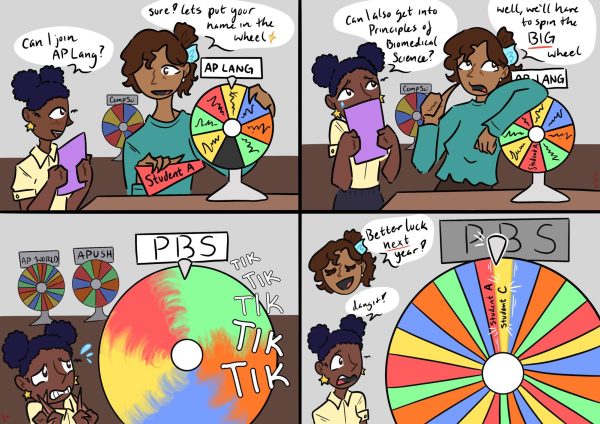SRVUSD should provide students contraceptives
With the ongoing issues of teenage pregnancies and STIs in this country, it is clear that teenagers need to be more diligent in practicing safe sex.
But should schools have to help with that?
It has become clear that schools need to participate in the distribution of contraceptives to teenagers, or at the minimum, have a condom availability program (CAP) in place where students can receive condoms by requesting them.
According to the Centers for Disease Control and Prevention (CDC), 46 percent of teenagers do not use condoms. Not coincidentally, nearly half of all new STIs are discovered in teens.
It’s apparent that teens need all the help they can get when it comes to practicing safe sex.
Another issue school provided contraceptives may help with is teen pregnancies, which threaten the educational and career futures of young teen mothers.
The top job of public schools should be to encourage education in their students and provide safety. It is important that schools have some form of preventative measures for STIs and teen pregnancy, even if it’s just contraceptive availability.
And it’s not as if contraceptives at school is a new concept. In fact, condom availability programs first began in 1990 in an effort to promote safe sex.
Despite studies showing that CAPs do not increase sexual activity and do increase condom usage, only 7.2 percent of U.S. high schools had established these programs as of 2014.
The hesitation behind providing contraceptives at schools is understandable. There are a lot of concerns accompanying this idea, many of them valid. But most of these concerns come with reasonable explanations.
For one, many people worry that condom availability may be seen as schools encouraging underage sex. And that it might pressure students to start.
While that is an understandable concern, it wouldn’t be as if students are being forced to participate in contraceptive distribution. Condoms would be available in discreet areas such as the nurse’s office, wellness center, or locker rooms.
For lack of a better term, it just wouldn’t be that big of a deal.
People also mistake condom availability as schools approving of teenagers having sex. Considering that most high schoolers are minors, this is a big worry for both parents and administrators. But what these people fail to realize is that when one looks at the statistics, a large percentage of teenagers are already having sex—although its worth noting that sex among teens has declined even as CAPs proliferate.
Providing contraceptives is simply a way for the public education system to support their students against harm in activity they are already doing.
At the end of the day, the priority should remain student safety, and schools should do whatever it takes to achieve that.

